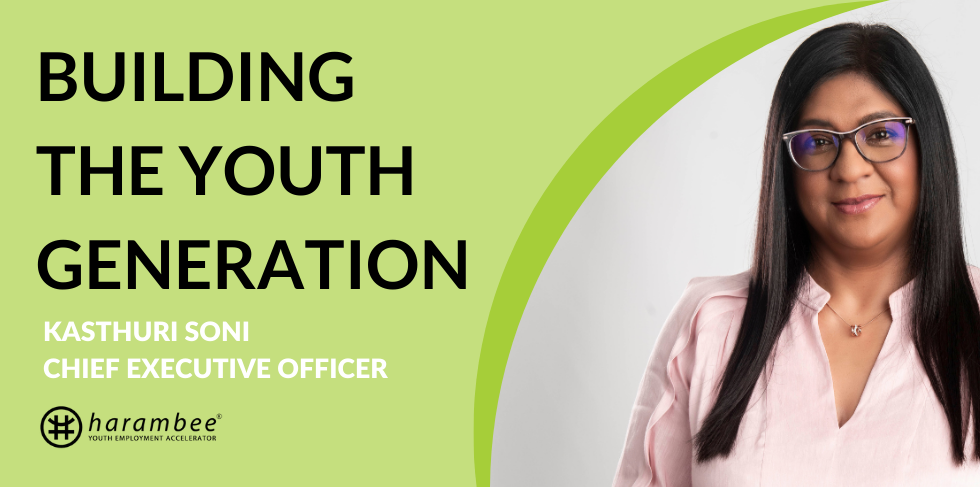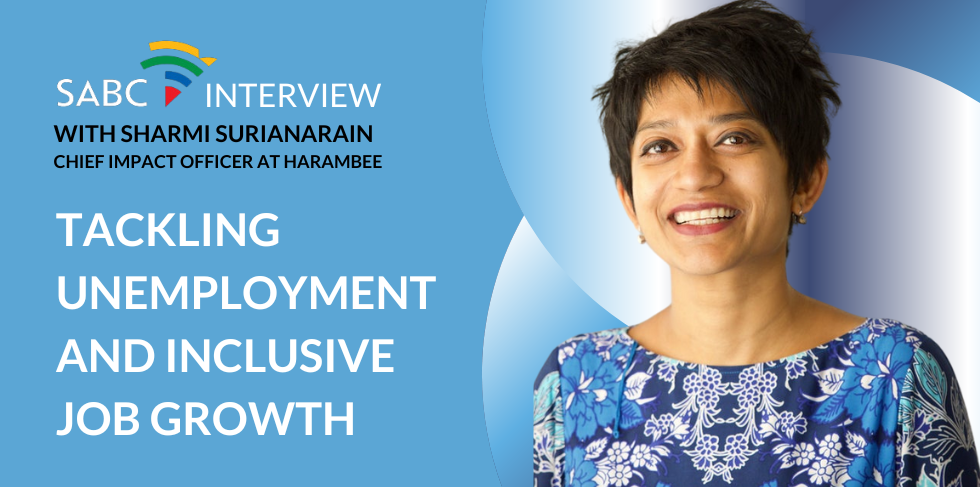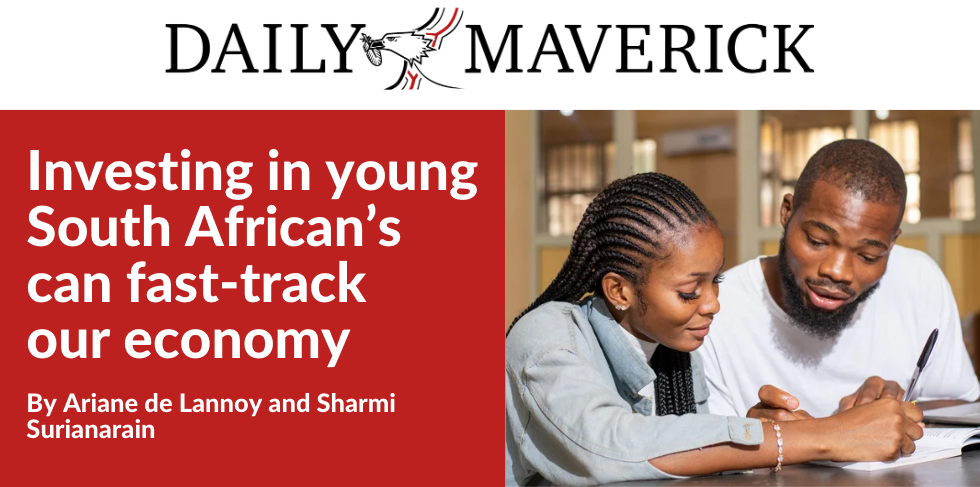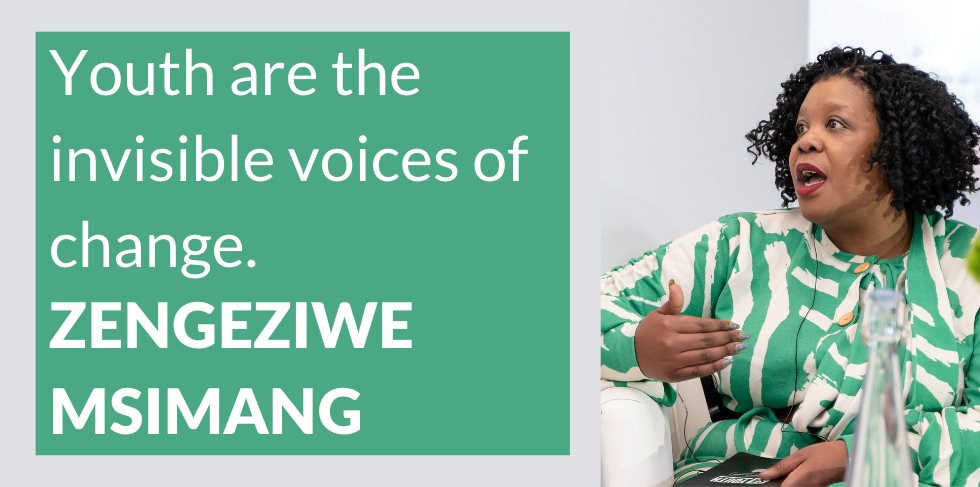IPASA is a locally established, voluntary association of independent philanthropists, private foundations and other organisations associated with philanthropy in South Africa. In their quarterly communication, Philanthropy Views, our Chief Impact Officer, Sharmi Surianarain, says we know that the system is fundamentally rigged against the young person. No amount of “fixing” the system at its margins, even at significant scale, will solve the fundamental challenges experienced daily by young people in trying to find work and remain economically secure. We know that we need to collaborate with many stakeholders—public, private, civil society—to address the lived realities of the young person, by putting young people at the centre. To tackle youth unemployment in South Africa, we need systems change.
Read the full article below:
No single social enterprise can scale operations enough to address the significant, complex, and severe crisis of unemployment and specifically youth unemployment in South Africa. What is needed is systems change, which recognizes and address the complexity of the challenge to go farther and faster together.
South Africa’s unemployment rate is the highest in the world. This is a massive crisis that has predated the pandemic. Billions of rands have been spent and are still being spent on a number of initiatives – by the government, by the private sector, and importantly, by the young and unemployed, who have little of it to begin with. A conservative estimate suggests that the South African government and private sector spends at least R145 billion on skilling, training, and employment programmes in a single year.
With a decade of experience in this field, Harambee Youth Employment Accelerator has learnt that our own journey in this space started with forty placements, mostly in the formal economy, and by collaborating with employer partners and the government to address the “skills mismatch” on the one hand, and to promote inclusive hiring.
Now, having enabled 500,000 pathways, which comprise of work opportunities in the formal and informal economy, and being part of a national, coordinated platform to connect youth to opportunities, we can claim that we have made progress. However, we also know that it is still not enough. We continue to run faster, but sometimes it feels like we are trying to catch up to a bullet train that keeps speeding ahead. We know that scale alone will never be enough.
And there is a reason for this. No matter how many pathways we create and enable, we know that the system is still fundamentally rigged against the young person. No amount of “fixing” the system at its margins, even at significant scale, will solve the fundamental challenges experienced daily by young people in trying to find work and remain economically secure. We know that we need to collaborate with many stakeholders—public, private, civil society—to address the lived realities of the young person, by putting young people at the centre.
Take for example, the barriers that young people face in finding and keeping work, such as the high costs of data, the countless hours and money spent on childcare and domestic work keeping women out of work, and a labour market obsessed with qualifications and degrees that have little to do with actual skills and competence. While the overhaul of these broken systems is a mammoth task, we can start somewhere. And as Harambee, we have learnt that we must start small—and with the lived experiences of young people. Over the years, we have learnt from thousands of young people what works to break down barriers, such as exempting them from onerous qualification requirements for entry level jobs or providing cheap or free access to work-seeking support.
The government’s National Pathway Management Network, SA Youth, is a step in the direction towards systems change. SA Youth allows work-seekers to find opportunities, to earn an income and to stay engaged and connected – for free. This platform gathers opportunities (for earning, learning, and volunteering) from many partners and makes them visible to young people through a mobi-site. The site allows them to select and apply for opportunities that are a good fit based on their profile and interest. And it costs the young person nothing—there are no fees, and the site is data-free. Partners can use the partner portal to load opportunities, to reach matched applicants, and to track their applications.
However, even connecting people to opportunities at scale is insufficient. We need to actively increase the number of opportunities that are available and suitable for young people—within the formal and informal economy. Harambee has done this actively within the Global Business Services sector—partnering with sector intermediary bodies and the Department of Trade and Industry and Competition DTIC), creating a roadmap to 500,000 jobs in this sector by 2030. By stimulating job creation with a focus on inclusion—for our most excluded young women and men, we could invest in our society’s greatest dividend—our young people.
So, what have we learned? Harambee’s insights on working towards systems change are three-fold:
- Firstly, as globally recognised innovator Ann Mei Chang suggested in her book, Lean Impact, we need to “fall in love with the problem, not the solution.” As social enterprises and funders, this requires a certain humility and that our approaches may have to be continuously refined to address the problems that persist. This needs for us to move away from “selling” our product or ideas, to “solving” the problem at hand.
- Second, while scaling up alone may be insufficient, adoption at scale is much more relevant for the complex challenges of youth employment. Innovations from social enterprises need to not merely be scaled up, but also be taken on board by other partners as well, especially those with wider reach than any single entity—such as other social enterprises, the government institutions that reach millions, and that have the deep systems-wide reach and impact that a single entity may never achieve alone. For example, Harambee’s pay-for-performance model—where institutions receive funding for accomplishment of job placement as an outcome—has been successfully adopted at scale by the National Skills Fund, reaching even more youth than Harambee could impact directly. We can have an even bigger impact if we actively work towards institutionalising innovations into government agencies with a wide reach.
- The third lesson is around the importance of partnerships. For many years, we were laser focused on “what we need to do,” which has served us well. But if we need these broken systems to be overhauled, we need to refocus on “what needs to be done” not just by us, but by the system as a whole. This needs patience in addition to humility, and an ability to collaborate, coordinate and execute partnerships across a range of different actors—public, private, and social. Our experience in partnering on SA Youth has taught us these valuable lessons—and the true meaning of the proverb, “If you want to go fast, go alone, if you want to go far, go together.”
Systems change is no panacea. And it may yet become yet another buzzword for the social impact landscape this decade. However, by shifting our approach from scale alone to systems change, we can both recognise and address the complexity of the challenges of youth unemployment—and go farther—and faster—together.
Source: Originally published on 21 September 2021 at https://ipa-sa.org.za/philanthropy-by-sector/job-creation/when-scale-is-not-enough-to-tackle-youth-unemployment-sharmi-surianarian-harambee-ipasa-newsletter-september-2021/.





 Stay Connected
Stay Connected

